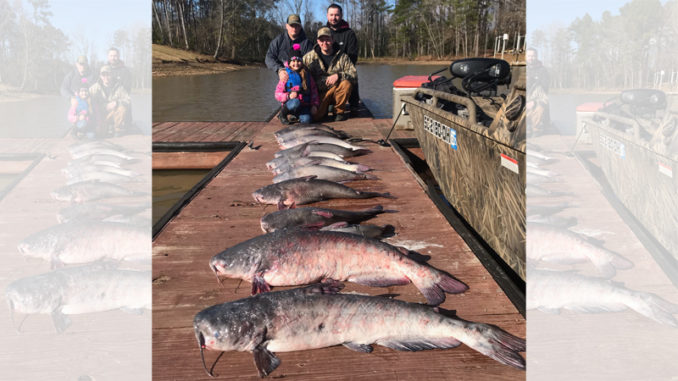
In all weather, catfish remain reliable for Carolina anglers
Cold weather, unseasonably warm weather, rainy weather; we’ve had it all in the Carolinas in the past week, and through all of it, catfish have continued to bite. And anglers are catching them with two main methods — anchoring and drifting.
“Lately, we have anchored down at the start of each trip unless it is windy. I like to drift when the wind is right. But when it isn’t windy, we’ve been anchoring down and fishing on the bottom with no-roll sinkers. But the wind has picked up later during the trip on some days. That’s when I start drifting. We pack up the sinkers then and use Drifting Stix, which are long, flexible weights that keep your baits on the bottom but slide through, up, and over sunken debris, rocks, and other obstacles along the floor of the lake,” said Capt. Jason Wolfe of Wolfe’s Guide Service.
Wolfe guides on numerous lakes throughout the Carolinas. He caught them good on Wateree last week, and he’ll be on Santee next week. He said he hopes to do some more drifting, but isn’t opposed to anchoring down.
“I like drifting the best. You can cover so much more water, so much more quickly when drifting. It also cuts down on deploying and pulling the anchor throughout the day,” he said.
Cut gizzard shad is a great bait
Wolfe has been using cut bait, mainly gizzard shad. And the hotspot has been in about 20 feet of water. He said that can change daily, especially this time of year when the weather is so unstable.
“One thing about catching catfish, especially this time of year, is you have to be flexible. You’ll have spring conditions one day, then brutally cold weather the next. The fish make adjustments in where they are hanging out. And anglers have to make adjustments too. But that’s what makes drifting so effective. No matter where they are, you’ll put bait in front of them as long as you’re covering ground,” he said.
When conditions aren’t right for drifting, Wolfe (803-487-3690) likes to anchor in a place that allows him to cast to a variety of areas. Anchoring on top of hump that offers a few casts in a few different depths of water is a good start. And he likes to anchor down where he can cast into some current, out of the current, in shallow water, and in deeper water.
“The bigger variety of spots you can cover, the more likely you are to find fish. Some days, fish will be in all of those spots. Other days, they’ll be concentrated in just one or two types of locations. And whatever is working on one part of the lake, be sure to try that on other parts of the lake when you pull up anchor to move,” he said.





Be the first to comment